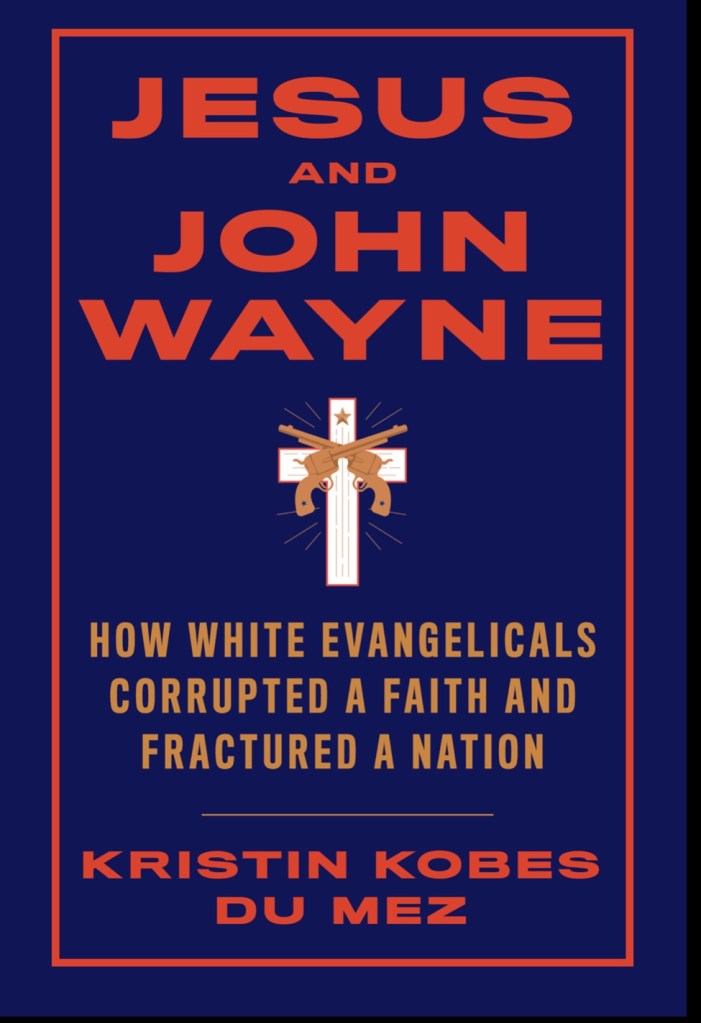
Sa unang yugto sa aking bagong serye ng mga pagkalalake at maka-Diyos, tinutugunan natin ang isyu ng labanan ng mga kasarian. Ang sinumang gumugol ng anumang oras sa mundo ay alam ang pakikibaka na umiiral, sa maraming pagkakataon, sa pagitan ng mga lalaki at babae at sa pagitan ng mga mag-asawa. Napakakaraniwan na maaari nating itanong ang tanong na, “Normal ba ito? Wala bang mas magandang paraan?” Mayroon akong magandang balita para sa atin — hindi ito dapat maging ganito. Sa post na ito ay titingnan natin kung paano sinasabi sa atin ng Bibliya kung saan nagsimula ang lahat ng problema at kung ano ang magagawa natin tungkol dito.
Saan ba tayo nag simula?
May ilang bahagi lamang ng Bibliya na naglalarawan ng panahong walang kasamaan sa mundo. Isa sa mga ito ay ang mga huling kabanata ng Pahayag kapag ang lahat ng kasamaan ay inalis na. Ang isa pa ay ang pinakasimula ng Bibliya sa Genesis 1-2, kaya naman mahalagang magsimula doon. Ang pangunahing kaganapan sa dalawang kabanata na ito ay ang paglikha, kung saan nilikha ng Diyos ang lahat ng umiiral. Ang isang mahalagang bahagi ng paglikha na iyon ay ang paglikha ng sangkatauhan, na inilalarawan ng Diyos sa ganitong paraan: “Kaya nilikha ng Dios ang tao, lalaki at babae ayon sa wangis niya” (Genesis 1:27).
Tandaan na walang gaanong paglalarawan na ibinigay kung ano ang hitsura ng relasyong ito ng lalaki at babae. Sa susunod na kabanata, inilarawan si Eva gamit ang isang salita na kadalasang nauugnay sa Diyos: Ezer, na kung minsan ay isinasalin bilang “kasama na tutulong sa kanya.” Bagama’t maaari tayong matukso na bigyang-kahulugan ito bilang katulong ni Adan, sa katotohanan ito ay isang salita na kadalasang ginagamit upang ilarawan ang Diyos (Ex 18:4; De 33:7, 26, 29; Ps 20:2; 33:20; 70:5; 89:19; 115:9-11; 121:1-2; 124:8; 146:5; Hos. 13:9). Sa katunayan, sa dalawampu’t isang beses na ginamit ang salitang ito sa Lumang Tipan, apat na beses lamang itong hindi tumutukoy sa Diyos.
Ang isang tanyag na ilustrasyon ay binibigyang-pansin ang katotohanan na si Eba ay nagmula sa tadyang ni Adan, na nagpapahiwatig ng magkatabi na pagkakapantay-pantay, sa halip na mula sa paa, na nagpapahiwatig ng pagsunod, o mula sa ulo, na nagpapahiwatig ng pangingibabaw.
Bukod doon, maaari nating ipagpalagay na ang mga pangunahing biyolohikal na tungkulin na ginagampanan ng mga lalaki at babae sa paglilihi at panganganak ay umiral, ngunit higit pa doon ay wala tayong ideya. Walang sinasabi tungkol sa domestic arrangement, tungkol sa work-life balance, tungkol sa leadership o authority o submission o hierarchy. Ang alam lang natin ay magkasama sina Adan at Eva sa hardin at araw-araw silang nakikipag-usap at nakikisama sa Diyos tuwing gabi.
Maraming haka-haka ang umiiral, gayunpaman, na nakasentro sa pagkakaiba sa pagbigkas ng utos na ibinigay ng Diyos kay Adan at ang pag-alaala kay Eba — ang ilan ay lubos na naniniwala na idinagdag ni Eva ang pariralang “o humipo man lang” (Ge 3:3). Gayunpaman, hindi malinaw kung ito ay nagsasalita sa mga isyu ng awtoridad o sa mga isyu ng madalas na hindi tumpak na mga katangian ng sinasalitang wika? Sino ang nakakaalam?
Saan ba tayo ngayon?
Sa kasamaang palad, ang mga bagay ay hindi nanatiling ganoon magpakailanman. Ang unang pagkakakilanlan bilang tao lamang ay maputik sa susunod na kabanata kapag nakita natin ang pagpasok ng kasamaan sa mundo. Maraming epekto ang kasamaang iyon sa paglikha, ngunit para sa ating mga layunin ngayon ay tututukan natin ang bagong relasyon na nagsimula sa pagitan ng mga lalaki at babae. Kapag tinatalakay ng Diyos ang epekto ng kasamaan kay Eva, idinagdag niya ang isang kawili-wiling pahayag sa Genesis 3:16 — “Pero sa kabila niyan, hahangarin mo pa rin ang iyong asawa at maghahari siya sa iyo.” Dito ipinakilala sa atin ang ubod ng labanan ng mga kasarian, katulad ng hahangarin ng babae para sa kanyang asawa at ang maghahari ng asawa sa kanyang asawa. Bagama’t ito ay madalas na binabanggit bilang biblikal na katwiran para sa patriarchy, ang katotohanan na ang pahayag na ito ay nangyayari pagkatapos ng Pagkahulog sa Kasalanan ay nangangahulugan na hindi ito ang orihinal na plano kung paano gagana ang mga relasyon. Sa halip, ito ay isang sistemang batay sa kasamaan.
Ano ang ibig sabihin nito? Ang “pagnanais” ng asawa ay higit na mauunawaan sa pamamagitan ng pagtingin sa isa pang gamit ng parehong salita. Nang harapin ng Diyos si Cain tungkol sa pagpatay niya kay Abel, sinabi niya ito sa Genesis 4:7, “Dahil kung hindi mabuti ang ginagawa mo, ang kasalanan ay maghahari sa iyo. Sapagkat ang kasalanan ay katulad ng mabagsik na hayop na nagbabantay sa iyo para tuklawin ka. Kaya kailangang talunin mo ito.” Pansinin ang pariralang iyon nagbabantay sa iyo para tuklawin ka? Sinasalin nito ang parehong salita. Sinasabi nito na ang relasyon ng mag-asawa ay mailalarawan sa pagnanais ng babae — ang uri ng pagnanais ng kasalanan para sa atin. Ang salitang ginagamit para sa mga lalaki, sa kabilang banda, ay paghahari. Hulaan kung saan lilitaw muli ang salitang ito? Oo, sa talakayan ng Diyos kay Cain tungkol sa kasalanan. Kung gusto ni Cain na salungatin ang pagnanais ng kasalanan para sa kanya, dapat niyang pagharian ito. Kawili-wili hindi ba? Kaya pagkatapos, ang parehong mga salita ay naglalarawan ng relasyon pagkatapos pumasok ang kasamaan sa mundo. Dahil dito, hindi natin maaaring gawin itong indikasyon ng esensyal na sangkatauhan kundi ng makasalanang sangkatauhan lamang.
May pag-asa ba?
Ngunit mayroong pag-asa. Hindi kailangang mangibabaw ang kasamaan sa mundo. Isang kislap ng pag-asa ang ipinakita sa atin sa Kawikaan 31, na kadalasang ginagamit upang ilarawan ang babaeng may tapang. Gayunpaman, ang ilang mga talata ay nakatuon sa relasyon ng pag-aasawa na mayroon ang babaeng ito. Sinabi sa 31:11-12, “Lubos ang tiwala sa kanya ng kanyang asawa, at wala na itong mahihiling pa sa kanya. Kabutihan at hindi kasamaan ang ginagawa niya sa kanyang asawa habang siya ay nabubuhay.” Hindi ba ito ay isang mahusay na paglalarawan ng relasyon nina Adan at Eva bago pumasok ang kasamaan sa mundo? At hindi ba ito isang magandang pangitain kung ano ang maaaring mangyari dito sa lupa?
Ang mga huling kabanata ng bibliya ay bumabalot ng lahat ng mabuti. Muli nating nabasa ang tungkol sa isang relasyon sa pag-aasawa — ito sa pagitan ng mundo at ng Diyos. Ang relasyong ito ay inilarawan bilang perpekto, ang nobya ay ang pinakamahalagang bahagi ng paglikha at ang lalaking ikakasal at nobya ay magkakasamang umiiral. Isipin ang larawang ito mula sa Pahayag 21:22-27:
“Wala akong nakitang templo sa lungsod na iyon, dahil ang pinaka-templo ay walang iba kundi ang Panginoong Dios na makapangyarihan sa lahat at ang Tupa. Hindi na kailangan ang araw o ang buwan sa lungsod dahil ang kapangyarihan ng Dios ang nagbibigay ng liwanag, at ang Tupa ang ilaw doon. Ang ilaw ng lungsod na iyon ay magbibigay-liwanag sa mga bansa. At dadalhin doon ng mga hari sa mundo ang mga kayamanan nila. Palaging bukas ang mga pinto ng lungsod dahil wala nang gabi roon. Ang magaganda at mamahaling bagay ng mga bansa ay dadalhin din sa lungsod na iyon. Pero hindi makakapasok doon ang anumang bagay na marumi sa paningin ng Dios, ang mga gumagawa ng mga bagay na nakakahiya, at ang mga sinungaling. Ang mga makakapasok lang doon ay ang mga taong nakasulat ang pangalan sa aklat ng Tupa, na listahan ng mga taong binigyanng buhay na walang hanggan.”
Hindi ba’t isang magandang larawan iyon? Hindi ba nito tinatapos ang isyu nang napakaganda?
Paano tayo ngayon?
Kung totoo nga na ang mga lalaki at babae ay nagsimula bilang magkatabi, magkapantay, parehong huwarang tao, kung totoo rin na ang orihinal na sitwasyon ay napalitan ng labanan, kung totoo rin na ang epekto ng kasamaan sa relasyon ng mag-asawa ay malalampasan, paano natin ito magagawa? Ano ang kailangan nating gawin? Hindi mo ba malalaman pero nagbigay din ng sagot ang Diyos para diyan.Sa Efeso 5:21, binabasa natin, “Magpasakop kayo sa isaʼt isa bilang paggalang kay Cristo.” Kaya ayun. Kailangan nating mamuhay ngayon na parang hindi kailanman naapektuhan ng kasamaan ang mundo. Kailangan nating isipin ang ating sarili bilang pantay. Kailangan nating kilalanin na ang pagsusumite ay mutual. Na kapwa babae at lalaki ay maaaring kumilos nang may awtoridad sa bawat sitwasyon. Bakit natin ito gagawin? Dahil sa paggawa nito ay ipinapakita natin ang ating paggalang kay Kristo. At siyempre hindi tayo hinihiling ni Jesus na gawin ang anumang bagay na hindi pa niya nagawa. Siya ang pinakahuling halimbawa ng pagsuko ng lahat upang mangyari ang plano ng Diyos na pagalingin ang mundo ng kasamaan. Sa halip na maupo lang sa langit bilang kapantay ng Diyos umaasa lang na magiging maayos ang lahat, na “kahit na nasa kanya ang katangian ng Dios, hindi niya itinuring ang pagiging kapantay ng Dios bilang isang bagay na dapat panghawakan. Sa halip, ibinaba niya nang lubusan ang sarili niya sa pamamagitan ng pag-aanyong alipin. Naging tao siyang tulad natin. At sa pagiging tao niya, nagpakumbaba siya at naging masunurin sa Dios hanggang sa kamatayan, maging sa kamatayan sa krus” (Filipos 2:6-8).
Tularan natin si Kristo at sikaping alisin ang impluwensya ng kasamaan sa mundo.
Ngayon napagtanto ko na ang lahat ng ito ay tila malinaw sa akin ngunit maaaring iniisip mo na may malalaking butas sa sinabi ko. Kung gayon, pakisabi sa akin sa mga komento sa ibaba!
Paki-click din ang Follow link sa ibaba para makuha ang mga susunod na installment ng seryeng ito sa napapanahong paraan.
Tandaan na ang pagbabahagi ay ginagawa ng mga kaibigan.
Larawan ni Artem Podrez sa Pexels.









